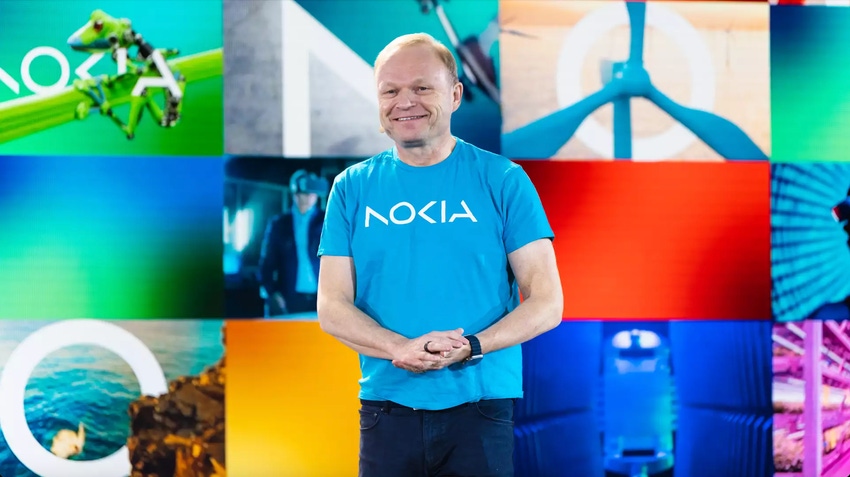Nokia CEO speaks out on AT&T's 'one vendor' move to Ericsson
AT&T's decision to evict Nokia was 'financially driven' and had nothing to do with technology or relationships, Pekka Lundmark tells Light Reading.

Pekka Lundmark would probably like to forget the last few weeks ever happened. In October, Nokia's boss had to warn investors that a major dip in customer spending, especially in the profitable US, would force him to cut between 9,000 and 14,000 jobs. Then, last week, came an American bombshell: the revelation that AT&T is to phase Nokia out of its mobile network and replace it mainly with Ericsson, an increasingly bitter rival in a sector expected to shrink this year. Nokia's share price is down 10% in the last month. At about $17.3 billion today, its market capitalization has halved in less than two years.
The loss of AT&T, which generated between 5% and 8% of all Nokia's mobile revenues for the first nine months, is the biggest upset Lundmark has faced since taking charge of the Finnish vendor in August 2020. Coming three years after Samsung beat Nokia to a lucrative 5G contract with Verizon, it has been viewed by some as evidence of ongoing problems within Nokia's largest business group by sales. Analysts have questioned the competitiveness of Nokia's 5G products, its commitment to "open RAN," a newish concept that excites some telco staff, and even the relationships between AT&T and Nokia executives.
But Lundmark rejects all such explanations and evidently feels there was nothing his company could do once AT&T had decided to give the entire network over to a single vendor. "Our understanding is that this was mainly financially driven," he told Light Reading during an interview today ahead of an update with investors.
"It's actually pretty simple," said Lundmark. "We currently have about one third of their radio network and our Swedish competitor has two thirds. Since they wanted to go for one vendor, it was pretty hard for us. Without knowing exactly what Ericsson offered, the simple math is that if you swap two thirds of the network instead of one third how can you be competitive financially?"
An open RAN scam?
AT&T has celebrated its Ericsson deal under the banner of open RAN, a set of interfaces allowing it to combine suppliers at the same mobile site, rather than buying every product from a single vendor's system. Yet Ericsson figures prominently and is down to provide both radios and baseband products – the two main components of a radio access network (RAN) – across some of the Nokia footprint, if not all of it. Fujitsu, the only other radio vendor identified in the announcement, had a 5G partnership with Ericsson before there was even an open RAN specification.
Interest in open RAN (or O-RAN) is certainly not why AT&T preferred Ericsson to Nokia, as far as Lundmark is concerned. "On the contrary, when it comes to technology in general and O-RAN in particular they have confirmed to us that this was not about technology, and we have heard it from so many customers and analysts that we are one of the leaders in O-RAN."
A helpful proof point came today with the announcement that Nokia is to begin selling commercial open RAN products to Deutsche Telekom in Germany, where its baseband will be coupled with Fujitsu radios. The planned deployment looks small, covering only the town of Neubrandenburg, the site of earlier trials. But it could presage a bigger rollout in future, especially if Deutsche Telekom is ultimately forced to replace Huawei, the controversial Chinese vendor catering to about two thirds of its network.
"There is a strong political discussion going on in Germany as to how the vendor strategy should look in the future," said Lundmark. "This is for us very encouraging." Nokia has also recently flagged an open RAN deal with Japan's NTT Docomo as well as interoperability tests with Mavenir, a US company, and three other vendors (Fujitsu being one). Ericsson, by contrast, has yet to publicize details of any such tests.
What's becoming increasingly clear is that a substitution of Ericsson for Nokia will carry major swap-out costs, which either AT&T or Ericsson will have to bear. "There is a significant amount of Nokia equipment which they have not yet depreciated," said Lundmark when asked about the financial logic of the move.
In their joint statement, AT&T and Ericsson valued the contract at $14 billion over a five-year period. But one estimate shared with Light Reading puts swap-out costs at an astronomical $10 billion. Earl Lum, the analyst at EJL Wireless Research who first said Nokia was due to be replaced in AT&T's network, now believes Ericsson is heavily financing the move.
In a research note published on LinkedIn, Lum said AT&T had managed to secure "very favorable per unit pricing on the RAN equipment" and "was also able to leverage substantial VENDOR FINANCING [his caps] from Ericsson for the next five years." His broad assessment? "AT&T capitalized on vendor weakness to extract favorable financing terms and pricing for the new 5G equipment."
Gloomier outlook
The upshot is a revision to Nokia's financial guidance, disclosed ahead of Lundmark's update with investors. It has lowered its operating margin target for 2026 from 14% to 13%, but also now says it will be able to achieve a double-digit margin at the mobile business group alone with net sales of just €10 billion (US$10.8 billion), compared with the €11.5 billion ($12.4 billion) it would currently need for this level of profitability. Does this mean cuts will be at the higher end of the scale Lundmark previously announced?
"It is still a bit too early to comment at that detailed level, but what I can confirm is that we will be able to stay within that range," he said. "Where exactly we will land will depend not only on the AT&T decision but also on success in the market in general in the next year or two."
Until AT&T showed its hand, Nokia had been on something of a roll outside China, growing its share of the 5G market from 22% to about 29% in the last few years, according to Lundmark. "AT&T will take that back a little bit, but we will still be way above the previous level of 22%."
Even so, he remains glum about the outlook for the mobile industry in the next two years. "It is only a matter of time before operators will again have to start investing and I believe that we will see attractive opportunities in the second half of the 2020s," he said. "The reality now is that when it comes to mobile networks investors will have to take a mid- to long-term view and be focusing more on the second half of this decade." Nokia is guiding for a 2026 operating margin of 6% to 9% in mobile.
Lundmark is far more optimistic about the other markets that Nokia serves. And unlike the mobile-focused Ericsson, it still generates 36% of its revenues from the sale of Internet Protocol, optical, fixed and submarine networks. Another 14% comes from cloud and network services, based on results for the first nine months.
Due largely to the differences between those sectors, Lundmark has been striving to give each separate business group more autonomy. From the start of next year, each will have its own sales organization and report cash flow at a regional level. Underscoring Nokia's commitment to research and development will be a new initiative within its Bell Labs subsidiary focused on so-called "deep technologies," including advanced 5G and 6G communications, semiconductor and optical chip design, artificial intelligence and quantum computing.
"We will make sure we get into 5G Advanced and then ultimately 6G as a leader, so that the situation in the early stages of 5G will not repeat itself," said Lundmark. When he took over, Nokia had been tripped up by some poor choices on the 5G products side under previous management. Years later, the portfolio looks much more competitive, while Nokia has seemed a bigger supporter than Ericsson has of open RAN. Unfortunately, that was not enough to sway AT&T.
About the Author(s)
You May Also Like












